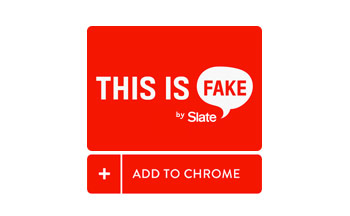This Is Fake: Spotting Fake News

Credit: Courtesy of Slate
This is Fake seeks to integrate fact checking into the web browsing experience.
May 17, 2017
From sensationalism and bias to utter falsehoods, fake news articles have been on the rise, especially leading up to and after the 2016 election.
The most famous example was the “Pizzagate” scandal. Fake news websites such as YourNewWire.com posted articles that claimed Hillary Clinton was connected to a child trafficking ring out of Comet Ping Pong- a Washington D.C. pizzeria. These articles lead Edgar Welch to bring a semi-automatic to the pizzeria in an attempt to rescue the children he believed were there.
This extreme example may seem a little ridiculous, but fake news perpetuated by social media has a strong influence on both sides of the political spectrum. To combat this rise of fake news, tools like This is False by Slate have been developed. This is False is a Google Chrome extension that flags fake news on Facebook to try to minimize the viral spread of flagrantly false articles.
This is Fake depends on its users to find and label fake news; when users see articles that they recognize as fake, they press a button that reports the link as false. When the article is reported, a link to a different article that disproves the fake one can be added. This feature not only stops fake news, but also fights the ignorance that perpetuates it.
